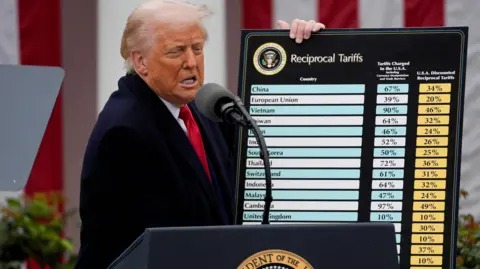Tariffs are taxes or duties imposed on imported goods Tariff News. They serve multiple purposes: protecting domestic industries from foreign competition, generating revenue, and sometimes as a tool for trade policy or diplomacy.
In the current environment, tariffs have become a front‑line tool in international trade strategy — not just between individual companies or sectors but between countries as a whole.
Current major developments
1. Legal challenge in the U.S.
In the Supreme Court of the United States (SCOTUS) hearings, justices heavily questioned whether the U.S. government under Donald Trump can legally impose sweeping tariffs using the International Emergency Economic Powers Act (IEEPA). Reuters+2Reuters+2 They raised doubts whether emergency‑powers laws were intended for broad tariff imposition — a domain traditionally requiring congressional action. Reuters+1
If the Court rules these tariffs exceed executive authority, it could force major adjustments in U.S. trade policy — and ripple globally.
2. Global trade tension escalation
The U.S. average tariff rate has reportedly shot up to about 20.1% — the highest since the 1910s according to estimates. The Times of India+1 In parallel, countries like China have both increased tariffs on U.S. goods and in some cases made limited reductions: e.g., China will suspend a 24% tariff on U.S. goods for a year but retain a 10% levy, and lift some rates up to 15% on U.S. agricultural goods from November 10, 2025. Profit by Pakistan Today
Clearly, the tariff regime is undergoing a major shift.
3. Implications for Pakistan
For Pakistan (your country of residence), the tariff news is especially relevant:
-
A policy note predicted that a U.S. proposed tariff increase to ~37.6% (from existing ~8.6% MFN rate) could reduce Pakistani exports to the U.S. by 20‑25%, costing about USD 1.1‑1.4 billion annually. Profit by Pakistan Today
-
Meanwhile, Pakistan has committed to significant tariff cuts (average applied tariffs to drop by ~43% over five years) under its agreement with the International Monetary Fund (IMF). Business Standard+1
These twin pressures — external (tariffs imposed by trading partners) and internal (need to liberalise) — create both risks and opportunities.
Why this matters
For economies & industries
-
Tariffs raise costs for importers and often get passed on to consumers in higher prices. For example, the Organisation for Economic Co‑operation and Development (OECD) warned that tariff increases could reduce global output and increase inflation. mint
-
Export‑oriented industries in countries like Pakistan, especially textiles, leather, rice etc., are vulnerable if their access to key markets is hit by higher tariffs.
-
On the flip side, industries in the imposing country may benefit from reduced foreign competition — but this isn’t guaranteed and may be offset by higher domestic costs.
For trade policy & global relations
-
The legal ruling in the U.S. could reshape how tariffs are implemented globally. If executive power to impose broad tariffs is restricted, trade policy may shift more toward negotiated agreements.
-
Countries facing U.S. tariffs may retaliate, seek alternative markets, or change supply chains. For example, in India’s seafood sector there is a pivot toward non‑U.S. markets. The Times of India
-
For Pakistan, being a smaller exporter with a limited number of major markets, diversification becomes more important.
What to watch
-
Supreme Court’s decision in the U.S. tariff case: Will it invalidate tariffs imposed under IEEPA or force a new approach?
-
Pakistan’s export performance under changing U.S. tariffs and whether Pakistani exporters shift focus more toward Asia, Africa or other markets.
-
Pakistan’s internal tariff reform: How quickly the new structure (0‑5‑10‑15‑20 % slabs) is implemented and how domestic industries adjust. Ice
-
Global trade patterns: Whether major economies steer away from blanket tariffs toward regional trade deals and supply‑chain restructuring.
-
Inflation/consumer cost impact: Tariffs raise cost pressures; in a country like Pakistan, any rise in imported input costs may feed into local inflation.
What Pakistan can do (some suggestions)
-
Exporters should diversify markets: Reliance on U.S. market is increasingly risky; look to Europe, Middle East, Africa, Asia.
-
Value‑addition matters: Instead of just raw exports, focus on processed/more value‑added goods to maintain competitiveness even if tariffs rise.
-
Monitor input‑costs: If Pakistan imports inputs that are subject to higher tariffs globally, it may raise local production costs; development of local substitutes may help.
-
Engage in trade diplomacy: Pakistan should closely follow bilateral/multilateral trade developments and position itself strategically.
-
Prepare for tariff reform: With commitment to reduce average applied tariffs, domestic industries need to plan for increased foreign competition, invest in efficiency, innovation.
Conclusion
The current wave of tariff developments — especially the legal, policy and trade‑flow changes unfolding in the U.S. and globally — mark a pivot point in the global trade environment. For Pakistan, which is both an exporter facing external headwinds and a country committed to internal liberalisation, the stakes are high. While there are risks (export loss, cost pressures), there are also opportunities (new markets, value‑added growth, supply‑chain reorientation).
